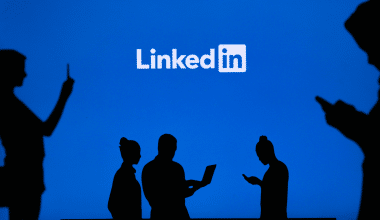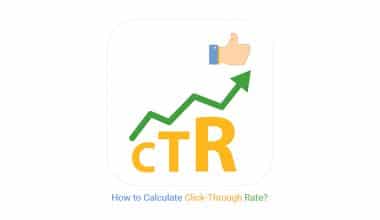When I realized the transforming power of creative content marketing, my approach to communicating with my audience shifted dramatically. It was a game changer that not only broadened my reach but also strengthened my relationship with my audience. In this essay, I’ll go into the area of creative content marketing, sharing insights, statistics, and personal experiences to demonstrate how you can use this strategy to generate outstanding results.
What is Creative Content Marketing?
Creative content marketing entails creating unique, intriguing content that piques the audience’s interest and motivates them to interact with your company. Unlike traditional marketing, which frequently focuses on repeating, basic messages, creative content marketing employs novel techniques to convey a story, elicit emotions, and increase interaction.
The Value of Creativity in Content Marketing
According to a Content Marketing Institute report, 72% of marketers believe that branded content outperforms traditional magazine adverts. This statistic emphasizes the importance of inventiveness in content marketing. Brands that can creatively express their message are more likely to connect with their target audience and stand out in a crowded market.
I recall starting my first creative content campaign. It was a series of interactive blog postings accompanied by user-generated content that allowed readers to contribute their experiences. What was the result? An increase of 50% in website traffic and 30% in interaction rates. This event showed me the importance of originality in content marketing and how it can greatly influence audience involvement and brand loyalty.
Benefits of Creative Content Marketing
#1. Enhanced Engagement
Creative content marketing fosters more audience participation. Engaging content, such as interactive movies, quizzes, and infographics, can greatly increase user engagement when compared to static content.
#2. Improved Brand Recall
Unique and memorable content contributes to a strong brand identity. According to a Nielsen study, branded content is 86% more memorable than standard advertising.
#3. Higher conversion rates
By offering valuable and interesting content, brands may better assist their audience through the buyer’s journey. Demand Metric discovered that content marketing gets three times more leads than typical outbound marketing while costing 62% less.
#4. Increased Social Sharing
Content that appeals to the audience is more likely to be shared on social media, broadening the reach of your marketing efforts. Interactive and visually interesting content is more likely to be shared on social media.
#5. Enhanced Customer Loyalty
Creative content can help you develop a community around your brand. By continuously providing valuable and interesting content, you may build a devoted consumer base that actively engages with your business.
Types of Creative Content Marketing
#1. Interactive Content
Users are engaged when they can actively participate in interactive content such as quizzes, polls, and interactive videos. This form of content not only entertains but also provides crucial insights into your target audience’s tastes and behavior.
#2. User-generated content
Encouraging your audience to generate content about your brand can greatly increase engagement and authenticity. Customer reviews, testimonials, and social media posts are examples of user-generated content that contributes to the growth of trust and community.
#3. Storytelling
Narratives that connect emotionally with your audience can leave an indelible impression. Telling fascinating stories about your brand, customers, or goods can help to humanize and relate to your target audience.
#4. Visual Content
High-quality photos, infographics, and videos are all necessary components of creative content marketing. Visual content is more interesting and digestible than text-heavy content, so it’s excellent for attracting your audience’s interest.
#5. Experiential Content
Creating immersive experiences, such as virtual reality (VR) or augmented reality (AR) content, can engage your audience and give a distinct brand experience. Experiential content enables customers to interact with your brand in new ways.
Key Components of an Effective Creative Content Strategy
#1. Authenticity
Authenticity is essential for developing trust with your audience. Make sure your content reflects your brand’s beliefs and mission. Genuine content resonates with users and builds a stronger relationship.
#2. High Quality Production
Investing in high-quality production guarantees that your content is eye-catching and professional. Whether it’s a blog article, video, or infographic, quality is important and reflects on your brand’s reputation.
#3. Emotional Engagement
Content that elicits emotions like joy, nostalgia, or empathy is more likely to be shared and remembered. Create content that connects emotionally with your target audience, increasing its effect.
#4. Relevance and Timeliness
Make sure your content is relevant to your audience’s interests and current trends. Timely content can capitalize on popular themes and drive engagement.
#5. Clear brand messaging
While being creative, it is critical to retain clear and consistent brand messaging. Your content should gradually convey your brand’s message without being overly promotional.
Top Creative Content Strategy Examples To Inspire Your Campaigns
Examples of creative content can take many different forms. Here is a detailed look at 13 of the most beneficial creative content marketing strategies.
- Blogging
- Visual contents
- Case Studies
- Ebooks and guides.
- Social media posts.
- User-generated content.
- Newsletters
- Research and Data
- Webinars
- Podcasts
- Q&A postings and interviews.
- Interactive content and tools.
- Live chat.
#1. Blogging
Fresh, high-quality content is popular with both search engines and visitors to websites. Blogging allows you to keep your audience up to date regularly, as well as rank for additional business-related keywords. You can use your blog to communicate business updates, industry news, useful recommendations, and more.
You may even monetize a blog by hosting ad placements and sponsorships to generate additional cash while boosting web traffic and leads for your business. Campaign Monitor, an email marketing tool, does an excellent job of updating their blog with innovative content marketing that adds value to readers. In addition to offering information about their product,
Why it works: Blogging allows you to provide frequent updates while ranking for more keywords online. It also positions your company as an industry authority and enables you to give value to customers.
#2. Visual content
Visual content takes numerous forms, including films, photos, and infographics.
Videos
Customers are ten times more likely to engage with video content than with text. Video marketing is gaining traction as a potent digital content strategy. Video marketing not only improves brand engagement but also enhances conversions.
Adding videos to landing pages can increase conversions by 80 percent, resulting in more income. In addition to publishing videos on your website, you can also post them on social media platforms such as YouTube to reach an even larger audience. Lyft, a popular ridesharing firm, uses creative video content in its “Undercover Lyft” series on YouTube.
The films, which feature celebrities posing as Lyft drivers, increase brand awareness and engagement.
Why it works: Video marketing expands your company’s reach and engagement while providing an inside look into your products, services, and culture. You’re also 53 times more likely to rank on the first page of Google search results if your site contains video content, making it a valuable SEO tool.
Images
Content with images receives 94% more views than text-only content.
Nobody enjoys scrolling through chunks of text online. So, if you want to boost your creativity and connect with more people, including photos in your content can assist. You do not have to be a professional photographer to use photographs in many forms of creative content marketing.
Simple photographs of your products, workplace, and people highlight what distinguishes your business and help visitors imagine your services. WeWork, a startup that provides personalized, shared office spaces, uses bright, fun photographs to emphasize its offices. Sharing the photographs on their website and social media allows clients to get a firsthand glimpse at the WeWork experience and the gorgeous locations they design.
Why it works: Custom photos and graphics differentiate your content from competitors’ pages, highlight your brand’s personality, and increase page views.
Infographics
Infographics offer vital data in a visual format, making it easier to consume. Data visualization increases brand engagement and makes it simple for prospective customers to locate and digest useful information. Because 65 percent of the population is visual learners, infographics appeal to a big audience and drive traffic to your website.
Airbnb, a travel business, designed a brilliant infographic to showcase summer travel trends while also promoting booking alternatives and Airbnb experiences.
Why it works: Infographics have a huge potential for re-sharing and are excellent for generating backlinks to your website. Furthermore, they simplify crucial information so that your customers can understand and act on it.
#3. Case Studies
Case studies offer strong social proof that verifies your brand’s trustworthiness. Nearly 83% of individuals trust suggestions from others above branded advertisements. Sharing customer case studies and testimonials allows you to demonstrate the achievements you’ve achieved.
Square, a payment processing software, offers case studies to demonstrate how its services help clients succeed. Their case studies include interesting photographs and testimonials from Square users.
Why it works: Case studies allow you to demonstrate the results you get for clients and provide social proof that motivates others to work with you.
#4. Ebooks and guides
Ebooks, manuals, and long-form content are useful resources for site visitors. They allow you to provide detailed information about your firm. You can even “gate” ebooks and tutorials, requiring visitors to submit their email addresses before gaining access.
This is an excellent method to increase your email list, and you can follow up with additional useful content. Jenna Kutcher, marketing entrepreneur and Instagram guru, offers a free course on her website. When visitors click the download button, a pop-up window appears, prompting them to provide their names and email addresses.
Why it works: Ebooks and guides add value to potential clients while establishing you as an industry leader. You may also use long-form content to build your email list and follow up with downloaders.
#5. Social media posts
In addition to providing content on your website, you can boost your content marketing efforts with this type of creative content: social media posts. Sites such as Facebook, Twitter, and Instagram allow you to build both sponsored adverts and free company pages. Posting on social media allows your audience to gain an inside peek at your brand. You can also reuse website content for social media.
Sharing photos and videos alongside text postings will increase engagement with your brand and encourage re-sharing. Madewell curates a social presence that mirrors their brand image, and they share outfit inspiration to entice people to visit the site and shop. Why it works: Social media allows you to communicate with current and new customers.
More than 2.3 billion people use social media today, and marketing on social platforms allows you to create a connection with a large audience.
#6. User-generated content
It takes time to consistently share high-quality content. User-generated content allows you to make use of the influence of fans and followers in creative content marketing. Posting user-generated content allows you to keep your website fresh.
Furthermore, consumers enjoy seeing themselves featured on your website and social media. To commemorate surpassing 100 million Instagram followers, National Geographic launched a content campaign encouraging followers to contribute their images with the #natgeo100 contest for a chance to win a safari to Tanzania. Since its inception in February 2019, the contest has generated over 140,000 Instagram posts, providing Nat Geo with a wealth of content to re-share on their website and other media platforms.
Why it works: Word-of-mouth marketing drives twice as many sales as paid advertising. User-generated content enables you to use word-of-mouth marketing while keeping your content strategy up to date.
#7. Newsletters
After you’ve compiled your email list, you can send them creative newsletter content. Email newsletters allow you to stay in touch and build relationships with subscribers who are interested in your business, whether you send your content on a weekly, monthly, or quarterly basis. Email newsletters are ideal for lead nurturing since they can include business updates, industry news, and valuable insights.
You may also utilize the information you collect when individuals download guides to send them personalized information on topics they are interested in. Morgan Harper Nichols, an author and poet, takes a unique approach to regular email newsletters by sending out daily emails with short poems and images. She also utilizes email to notify subscribers about events such as the release of her new book.
Why it works: This form of content marketing can generate $44 for every $1 spent, resulting in a 4400 percent ROI. Newsletter content is ideal for lead nurturing since it allows you to deliver relevant information directly to leads’ inboxes.
#8. Research and Data
According to the Content Marketing Institute, 75% of respondents believe data-driven content is more trustworthy. Data supports crucial points in your content, and providing unique research and data establishes your company as a thought leader in your field. Content featuring research and data is excellent for boosting traffic to your website and positioning you as a go-to resource for business-related information.
You can also transform your findings into SlideShare content to boost its shareability. HubSpot updates its website with original research and compiles data and images into useful SlideShare presentations.
Why it works: Using original research and data boosts your content’s credibility and trustworthiness.
Furthermore, sharing research generates important traffic to your website and establishes your business as a go-to resource.
#9. Webinars
Webinars, a rapidly rising type of content, produce high-quality leads, raise brand exposure, and improve product and service understanding by 74%. In addition to their lead generation potential, webinars allow you to deliver additional value to current clients. For example, you may hold webinars to show how your products and services assist clients.
You can also collaborate with industry leaders and experts to co-host webinars. This allows you to reach a large audience, and you may encourage attendees to share webinar recordings with those who might benefit from your products. Google Partner Academy on Air webinars provides viewers with excellent marketing insights and ideas for achieving their business goals.
These live streams bring value to Google Partner agencies and encourage businesses to discover the advantages of becoming a Google Partner.
Why it works: Webinars allow potential consumers to learn more about your offerings while also providing vital resources to existing clients. Not to mention that they establish your authority and allow you to collaborate with prominent players in your business.
#10. Podcasts
I enjoy a good true-crime podcast binge as much as the next gal. Have you considered investing in podcasting for your business? Podcasting is becoming increasingly popular as a content marketing tactic.
Podcasts can help you expand your online reach, as 21 percent of adults in the United States listen to at least one podcast every month. Podcasts, like webinars, enable you to demonstrate your expertise and differentiate your business from the competition.
If starting your own podcast seems onerous, consider advertising on prominent industry podcasts. The Creative Class podcast, co-hosted by freelance authors Kaleigh Moore and Paul Jarvis, is a valuable resource for freelancers. Episodes include advice on pricing, landing projects, and engaging with clients.
The podcast highlights the hosts’ freelancing knowledge and is an excellent method to promote Creative Class, the pair’s online freelancing school.
Why it works: Podcasting is a unique way to reach more people and establish yourself as an expert in your profession.
#11. Q&A postings and interviews
Q&A articles and interviews, which are ideal for answering frequently asked questions and demonstrating your knowledge, are hallmarks of creative content marketing. In addition, Q&A postings and interviews are ideal for blog sharing. Answering questions in the form of Q&A posts can also help you achieve highlighted snippets, which are search results that directly answer inquiries and display above organic results.
To increase interaction, consider asking followers to submit questions for you to answer in posts and interviews. In a recent blog post, the WebFX talent acquisition (TA) team answered several frequently asked questions. This piece (and the amazing insights from our TA team) is a great resource for applicants.
Why it works: Q&As and interviews allow you to answer commonly asked questions (FAQs), demonstrate your expertise, and engage leads.
#12. Interactive content and tools
If you want to reduce your site’s bounce rate, include interactive content and technologies that keep visitors engaged. Quizzes, polls, surveys, interactive movies, and infographics are all examples of interactive content. You can also develop your own assessment tools and calculators.
Worried about the development resources required to generate interactive content? Don’t worry. Begin simply by offering some interactive surveys and quizzes.
These tools not only add value to visitors’ experiences, but they also allow you to collect data that may be used to shape marketing initiatives. Roadtrippers, a smartphone app for booking unique road trips, prioritizes interactivity in its web design. Along with interesting road trip guides, the site includes several tools for travelers to plan and modify excursions.
For example, on their homepage, visitors can enter their beginning and ending points to get a map of their journey, replete with detours, pit stops, and featured locations.
Why it works: Interactive content and tools increase engagement, lower site bounce rates, and provide value to site visitors.
#13. Live chat
Live chat leverages the potential of content marketing to provide a real-time connection with your audience. When purchasing online, an estimated 79 percent prefer instant answers, and live chat allows you to communicate with them in real-time. Platforms such as Drift enable you to chat with site visitors, invite them to ask questions, and help them learn more about your company.
You can also use live chat on social media networks such as Facebook Messenger, which allows you to answer manually or automatically. Live chat is especially useful for ecommerce companies since it streamlines the purchasing process and provides the necessary help to decrease shopping cart abandonment. Urban Outfitters provides a smooth live chat experience in which customers can communicate and ask questions throughout their purchasing experience.
The UO chatbot guides visitors through a series of qualifying questions to choose the best solution, and consumers can interact with a customer service representative.
Why it works: When purchasing online, people want immediate replies, and live chat allows you to communicate in real time, gathering information from leads and delivering useful information.
Using Templates in Creative Content Marketing
Templates can help you speed up your creative content production by offering a uniform structure and ensuring that no important aspects are missing. Here is a simple template that you can use.
Key Takeaways
- Creative content marketing increases user connection and engagement by utilizing novel and interactive content types.
- Unique and memorable content contributes to the development of a strong brand identity and boosts consumer brand recall.
- Providing meaningful and entertaining content helps the audience navigate the buyer’s journey more efficiently, resulting in increased conversion rates.
- Content that appeals to the audience is more likely to be shared on social media, broadening the reach of your marketing efforts.
- Consistently providing valuable and interesting content builds a devoted consumer base that actively interacts with your company.
Conclusion
Creative content marketing is a potent strategy that may significantly increase your brand’s engagement and reach. By emphasizing authenticity, high-quality production, emotional involvement, relevancy, and clear messaging, you can create content that not only captivates your audience but also produces real results. Are you ready to boost your content marketing strategy and harness the power of creativity? Share your stories, and let’s talk about how creative content marketing has helped your brand!
Related Articles
- 30+ Best Guest Blogging Sites to Submit Your Content in 2024
- Content Marketing for Startups: Growth Hacking Secrets for Explosive Traffic
- The Biggest Content Personalization Mistakes You’re Probably Making (And How to Fix Them)
- What is Content Syndication and Why You Should Start Using It Today
- What Is Authoritative Content? How It Is Used and Steps To Creating One





